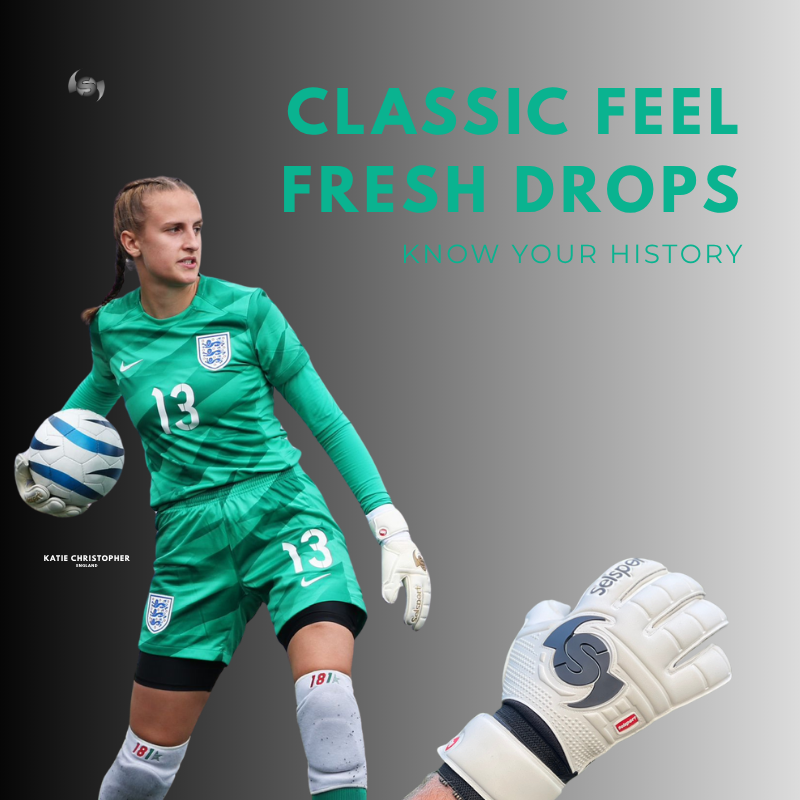



The heartbeat of every great goalkeeper glove.
At Selsport, latex isn’t just a material - it’s an obsession. For over 25 years, we’ve crafted gloves exclusively for goalkeepers who live for precision, control, and performance. And when it comes to latex, we know what truly matters.
Every palm begins with two essential layers - foam for comfort and latex for pure grip. The latex is the soul of your glove, the component that defines how the ball feels, sticks, and moves in your hands. But here’s the truth: not all latex is created equal. Two gloves may look the same - only one will perform like a Selsport.
Top-tier latex delivers unmatched grip and feel, responding instantly to touch. Softer, more advanced latexes give you world-class control - but they sacrifice a little durability in return. Tougher latexes last longer, making them ideal for training and younger players still mastering their craft.
Latex is alive - a natural material shaped by every dive, save, and surface. Its life depends on how you treat it, clean it, and play with it.
At Selsport, we offer gloves for every level of the game, all designed with one thing in mind: giving you the confidence to achieve your goals. Whether you choose maximum grip or maximum durability, you’re wearing decades of goalkeeper expertise in every pair.
Selsport. Passion is built into every layer.
Meet the pinnacle of grip.
Ultimate Adhesion is not just latex - it’s precision-engineered control at your fingertips. Designed for goalkeepers who demand perfection, this is the purest, most responsive latex we’ve ever created. Every touch feels connected. Every save, effortless.
Developed for elite players, Ultimate Adhesion delivers extraordinary grip in any condition - rain or shine - giving you total confidence when it matters most. Its micro-cell structure creates an instant bond with the ball, offering that unmistakable “stick” that changes games.
Yes, it’s premium. Yes, it’s rare. And yes, it's worth it. Each pair arrives protected by a removable film to preserve its perfection until the moment you're ready to perform.
This is not for everyone. It’s for goalkeepers who expect more - from their gloves, from their game, and from themselves.
Ultimate Adhesion. For those who refuse to let go.


Precision. Power. Performance.
Extreme Adhesion Latex (EA+) is the gold standard for serious goalkeepers - the perfect balance of grip, softness, and control. It’s the latex trusted by professionals who play hard, train harder, and expect their gloves to rise to every challenge.
Engineered for outstanding performance in all weather conditions, EA+ latex comes alive with a light mist - activating its natural tack for exceptional control and cushioning on every impact. It's 4mm + 4mm dual-layer construction absorbs powerful shots with ease, keeping your hands confident and composed.
This is high-performance latex refined to perfection - responsive, supple, and ready for anything.
Extreme Adhesion. For goalkeepers who demand total control, no matter the conditions.
Built to perform. Made to last.
Superior Adhesion Latex (SA) brings pro-level performance within everyone’s reach. Designed for aspiring goalkeepers and dedicated players who train with intent, this latex delivers exceptional durability, comfort, and grip - all at an unbeatable value.
Its 4mm + 4mm construction provides the solid foundation you need to develop technique, confidence, and control. Every catch feels assured. Every dive, protected. Unlike many entry-level gloves with thinner 2mm palms, Superior Adhesion gives you the feel and resilience of a true professional glove.
This is the perfect balance between longevity and performance - tough enough for daily training, responsive enough for match day.
Superior Adhesion. Where every goalkeeper’s journey begins - with quality they can trust.

EVERY TIME

AS STANDARD

EVERY SEASON